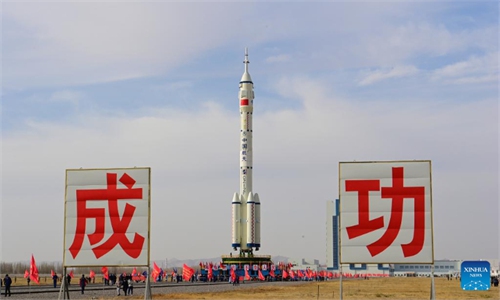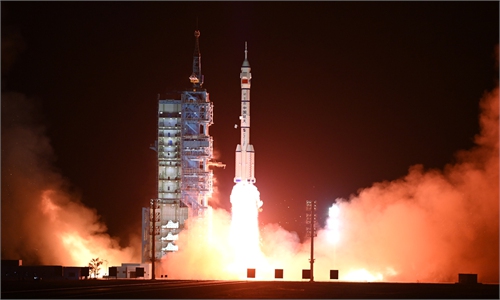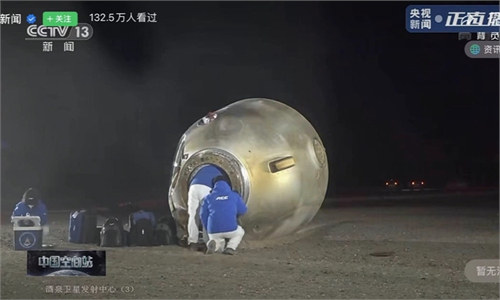China’s aerospace dream inspires Chinese people’s bigger strides to explore further into space
Editor's Note:
A decade ago, Chinese President Xi Jinping, also general secretary of the Communist Party of China (CPC) Central Committee and chairman of the Central Military Commission, put forward the Chinese Dream which envisages the brilliant future of the Chinese nation. The Chinese Dream is about pursuing strength of the country, rejuvenation of the nation and happiness of the people.
Over the decade under the leadership of the CPC Central Committee with Comrade Xi at the core, Chinese people have made unremitting efforts and taken great strides toward realizing the Chinese Dream of national rejuvenation while enjoying tangible benefits from a prosperous and fast-growing country.
In this series which tries to unpack the concept of the Chinese Dream through specific stories and anecdotes, the Global Times reporters talked to ordinary Chinese citizens - an aerospace engineer participating in the launch of China's first space station, a grassroots official dedicated to rural revitalization, an environmental warrior combating desertification in the Gobi desert, an artist promoting traditional Chinese culture, as well as a worker at a Belt and Road Initiative (BRI) project overseas - to see how the Chinese Dream inspires the nation and the world. This is the first part of the series.
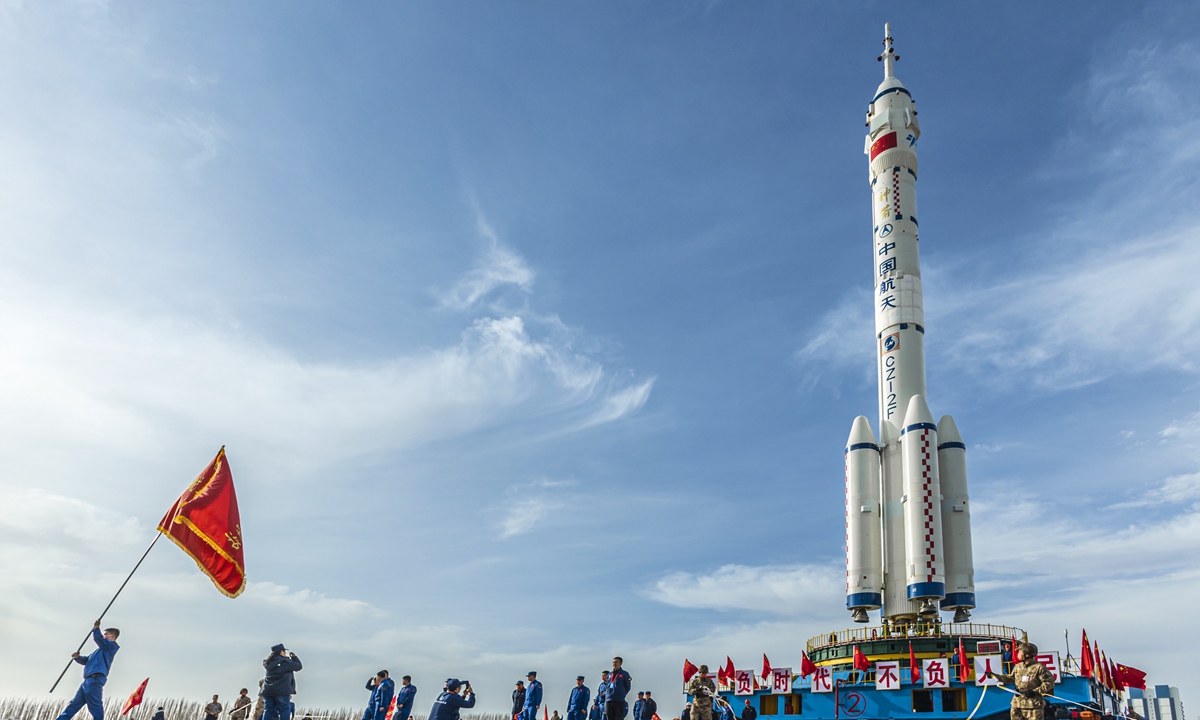
In the early morning of November 30, the crew of China's Shenzhou-15 manned spaceship had just settled into China's space station. They were received warmly by the Shenzhou-14 crew, who had been waiting for their arrival.
It was a dream-fulfilling moment - six taikonauts embracing each other and taking a group photo for the first time at China's space station.
The Shenzhou-15 crew will wrap up the last leg of China's space station construction, kick off its initial application and development, and leave a noteworthy milestone in "China's aerospace dream."
The Chinese Dream drives the aerospace dream, and the aerospace dream supports the Chinese Dream.
"The space dream is part of the dream to make China stronger. With the development of space programs, the Chinese people will take bigger strides to explore further into space," President Xi pointed out in June 2013, while making a video call at the Beijing Aerospace Control Center to the three Shenzhou-10 astronauts aboard the orbiting space module Tiangong-1, according to the Xinhua News Agency.
Since the 18th National Congress of the CPC in 2012, the CPC Central Committee has attached great importance to the development of the aerospace industry, and incorporated the development of aerospace power into the cause in advancing the great rejuvenation of the Chinese nation.
The construction of China's space station has completed the Chinese-style leap through constant exploration and innovation. From unmanned to manned, from short-term stays at the space station to medium- and long-term stays, from in-cabin experiments to spacewalks, the manned spaceflight project has steadily advanced, fulfilling dreams in the industry as well as inspiring more youth to dream about space.
An engineer's story
Chen Xiaoyu dreamed that he could do some earth-shattering things at the age of 10.
He still remembers the success of the Shenzhou-5 mission, when Yang Liwei entered space with spacecraft in October 2003, becoming the country's first "taikonaut" in orbit, realizing the millennium dream of the Chinese nation to fly into the stars.
"At that time, I felt that flying into boundless space was a glorious moment and an adventure for the brave," he told the Global Times. "I fantasized about flying into space."
Chen, now 29, serves as the designer in the rendezvous and docking microwave radar team at China Aerospace Science and Industry Corporation Limited (CASIC).
After graduating from university, Chen immediately started working on the microwave radar project. His team has been working on the development of the rendezvous and docking microwave radar, which provides distance, velocity, and angle measurement information between two spacecrafts during the rendezvous and docking process.
His tutor, Sun Wu, is the chief designer of the microwave rendezvous and docking radar. He started the research and development process of radar products in 1999 and has worked hard for a decade to achieve success. "The realization of the aerospace dream is hard-won," Chen concluded.
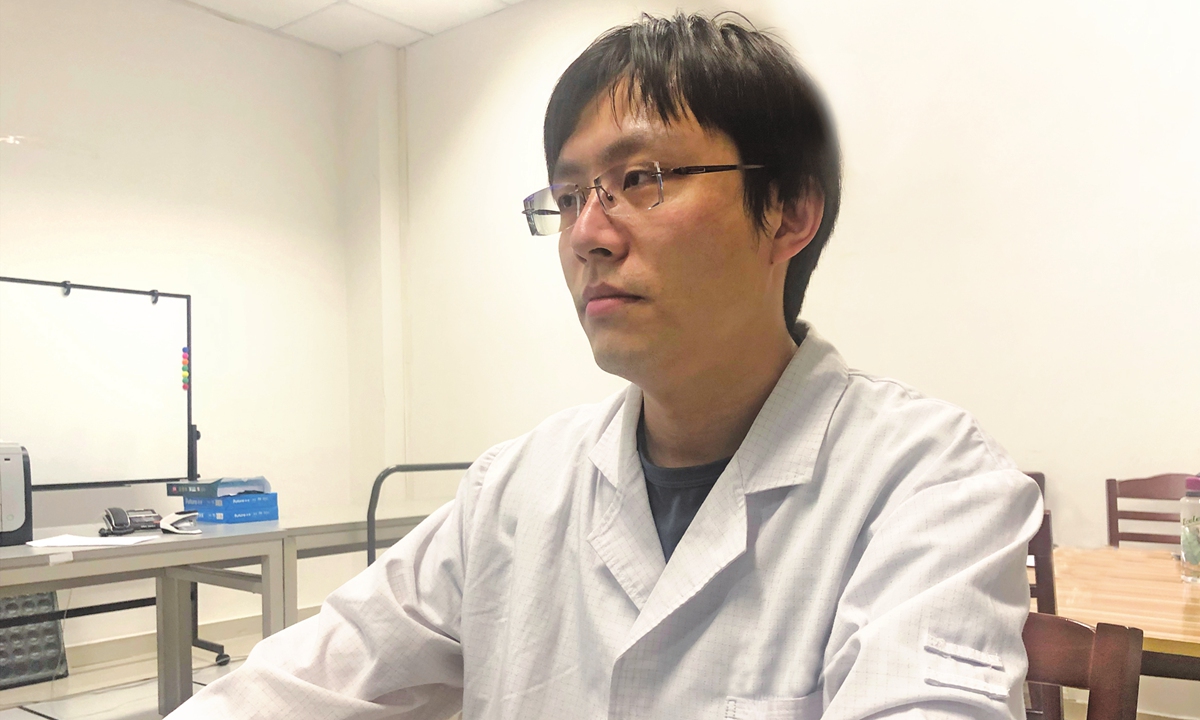
Chen has seen his dream come true through his work.
At 3:54 pm on June 17, 2021, the Shenzhou-12 manned spaceship successfully docked with the space station core module Tianhe. The spaceship completed orbital status setting after entering orbit and conducted fast autonomous rendezvous and docking with the front docking port of Tianhe.
This was the first rendezvous and docking mission between the space station and a manned spacecraft.
"Seeing the measurement data output by our developed microwave radar beating on the screen, watching the spacecraft gradually approaching the space station, and successfully completing rendezvous and docking is the moment when our dreams first came true," Chen said.
In Chen's eye, China's aerospace dream is a road for the Chinese people to use their own struggle and efforts to realize the Chinese nation's dream of flying into the stars and practice self-reliance and self-improvement in cutting-edge high-tech fields.
"Aerospace technology is a complex system of engineering. In the last decade, Chinese taikonauts have used their own hard work and sweat to stick to their beliefs from 0 to 1, uniting and cooperating with each other to complete a great project," Chen said.
Chen said that his growth in his career relies on the direction and help of his tutor and other collogues. Inspired by the spirit of aerospace innovation, he vows to carry forward the tradition of China's aerospace industry passed down from generation to generation, and help new engineers grow rapidly.
"After the completion of the space station construction, various space projects are now in full swing showing great potential," Chen said. "In the future, our team will expand into new areas of space, apply and test more innovative technologies, open up new spaces, inherit the team spirit of microwave radar, and step into deeper and farther space."
Never give up
The construction of the space station is an important milestone in China's aerospace industry. It carries the dream of flying to the stars that Chinese astronauts have been striving toward for 30 years, and also carries with it the Chinese people's dream of exploring "stars and oceans."
In the journey of chasing this dream to space, Chinese taikonauts and people working in the field have hit new heights and set new milestones.
"On the road of flying to the stars and chasing my dream, I never thought of giving up," Shenzhou-15 crew member Deng Qingming, part of the Chinese taikonauts crew said, adding that in order to fulfill his dream of wearing an astronaut suit and going into space, he persisted for nearly 25 years in daily study, training, and mission preparation.
"Thanks to the continuous struggle and overcoming difficulties met by several generations of taikonauts, I have waited for the opportunity to realize my dream!"
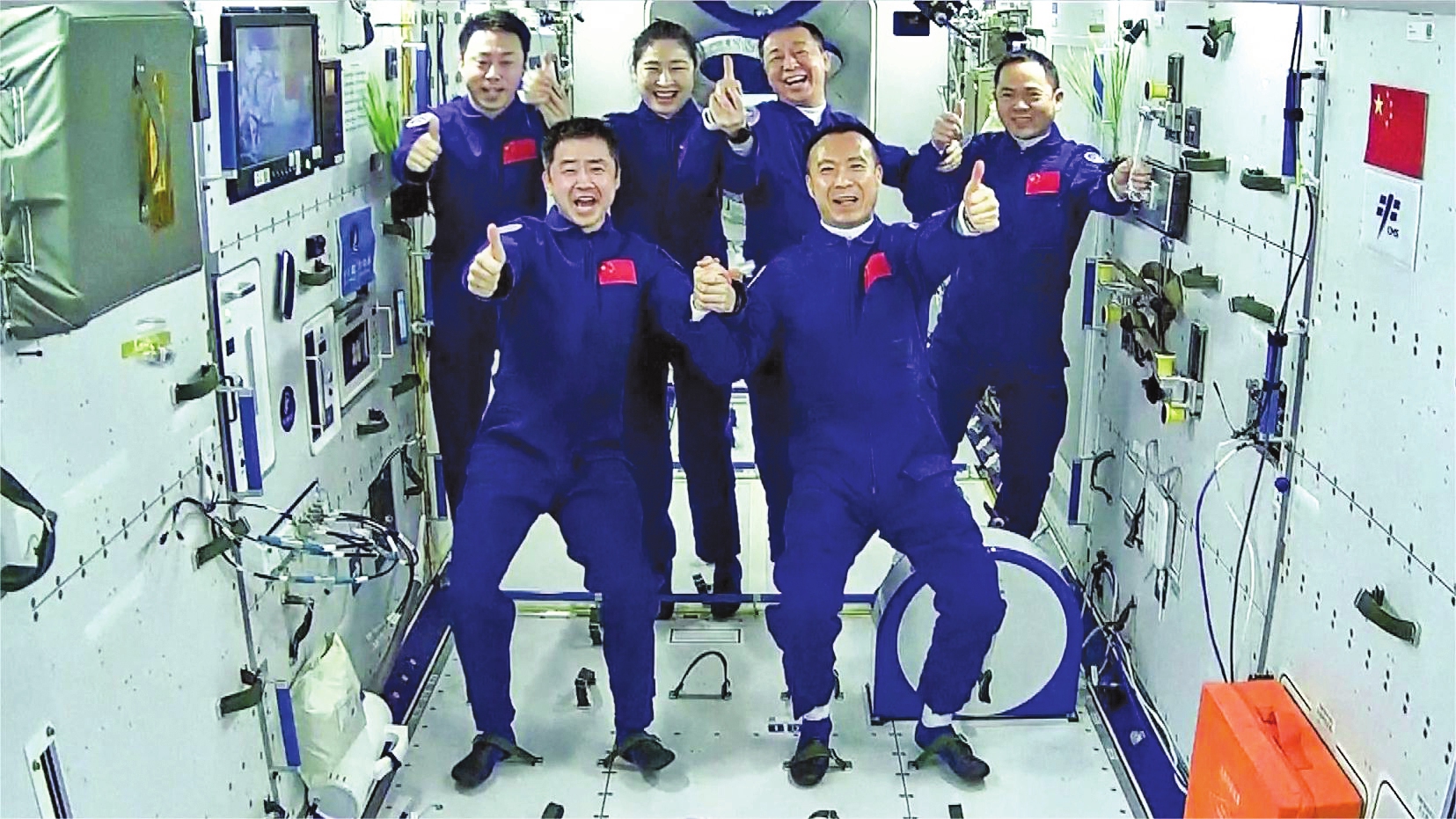
Since starting taikonaut training at the age of 32, Deng has never relented and been strict with himself. He cherishes every opportunity to be selected, and takes the initiative to increase the intensity and difficulty of training. "Do it again" is his mantra at training.
"As an astronaut, it is my normal state and my attitude to stick to my original intention of flying into space and never stop training," he said. "No matter how old I am, being able to be needed by the motherland is the happiest thing."
Behind Deng's story, in today's Chinese aerospace team, Gen X and Gen Y have become the backbone of the operation, while Gen Zers are coming into their own in the illustrious field. The new generation of Chinese astronauts who come with lofty dreams and drive will continue to chase their dream.
This year is the 30th anniversary of China's manned space program. China's aerospace industry has achieved breakthroughs in spacecraft launches and astronaut spacewalks, and is making efforts in large-scale space science experiments.
In 1992, when constructing a manned orbiting laboratory was still a flight of fancy for the Chinese people, China embarked on a "three-step" strategy to boost its human space program, according to Xinhua.
The first step was to send astronauts into space and ensure their safe return. The second was developing advanced space flight techniques and technologies including extravehicular activity and orbital docking. The third step is to assemble and operate a permanent manned space station.
The achievements have ignited enthusiasm among Chinese youth, encouraging them to pursue their space dreams.
Space science is now more accessible to Chinese teenagers. Yang Liwei, China's first space traveler, conducted an aerospace-themed science class for teenagers in March. More than 280,000 teenagers watched the class through live broadcasts.
Yang also said previously that the nation's teenagers should actively pursue their dreams with hope, and contribute to transforming China into a global powerhouse of space exploration.
China will continue to promote science popularization. By 2035, the proportion of citizens with high scientific literacy will reach 25 percent, and the high-quality development of popular science services will be significantly improved, according to a guideline on strengthening the popularization of science and technology in the new era released by the central authorities.
A decade ago, Chinese President Xi Jinping, also general secretary of the Communist Party of China (CPC) Central Committee and chairman of the Central Military Commission, put forward the Chinese Dream which envisages the brilliant future of the Chinese nation. The Chinese Dream is about pursuing strength of the country, rejuvenation of the nation and happiness of the people.
Over the decade under the leadership of the CPC Central Committee with Comrade Xi at the core, Chinese people have made unremitting efforts and taken great strides toward realizing the Chinese Dream of national rejuvenation while enjoying tangible benefits from a prosperous and fast-growing country.
In this series which tries to unpack the concept of the Chinese Dream through specific stories and anecdotes, the Global Times reporters talked to ordinary Chinese citizens - an aerospace engineer participating in the launch of China's first space station, a grassroots official dedicated to rural revitalization, an environmental warrior combating desertification in the Gobi desert, an artist promoting traditional Chinese culture, as well as a worker at a Belt and Road Initiative (BRI) project overseas - to see how the Chinese Dream inspires the nation and the world. This is the first part of the series.

The combination of Shenzhou 15 manned spacecraft and the Long March-2F Y15 carrier rocket is transferred in Jiuquan, Northwest China's Gansu Province on November 21. Photo: VCG
In the early morning of November 30, the crew of China's Shenzhou-15 manned spaceship had just settled into China's space station. They were received warmly by the Shenzhou-14 crew, who had been waiting for their arrival.
It was a dream-fulfilling moment - six taikonauts embracing each other and taking a group photo for the first time at China's space station.
The Shenzhou-15 crew will wrap up the last leg of China's space station construction, kick off its initial application and development, and leave a noteworthy milestone in "China's aerospace dream."
The Chinese Dream drives the aerospace dream, and the aerospace dream supports the Chinese Dream.
"The space dream is part of the dream to make China stronger. With the development of space programs, the Chinese people will take bigger strides to explore further into space," President Xi pointed out in June 2013, while making a video call at the Beijing Aerospace Control Center to the three Shenzhou-10 astronauts aboard the orbiting space module Tiangong-1, according to the Xinhua News Agency.
Since the 18th National Congress of the CPC in 2012, the CPC Central Committee has attached great importance to the development of the aerospace industry, and incorporated the development of aerospace power into the cause in advancing the great rejuvenation of the Chinese nation.
The construction of China's space station has completed the Chinese-style leap through constant exploration and innovation. From unmanned to manned, from short-term stays at the space station to medium- and long-term stays, from in-cabin experiments to spacewalks, the manned spaceflight project has steadily advanced, fulfilling dreams in the industry as well as inspiring more youth to dream about space.
An engineer's story
Chen Xiaoyu dreamed that he could do some earth-shattering things at the age of 10.
He still remembers the success of the Shenzhou-5 mission, when Yang Liwei entered space with spacecraft in October 2003, becoming the country's first "taikonaut" in orbit, realizing the millennium dream of the Chinese nation to fly into the stars.
"At that time, I felt that flying into boundless space was a glorious moment and an adventure for the brave," he told the Global Times. "I fantasized about flying into space."
Chen, now 29, serves as the designer in the rendezvous and docking microwave radar team at China Aerospace Science and Industry Corporation Limited (CASIC).
After graduating from university, Chen immediately started working on the microwave radar project. His team has been working on the development of the rendezvous and docking microwave radar, which provides distance, velocity, and angle measurement information between two spacecrafts during the rendezvous and docking process.
His tutor, Sun Wu, is the chief designer of the microwave rendezvous and docking radar. He started the research and development process of radar products in 1999 and has worked hard for a decade to achieve success. "The realization of the aerospace dream is hard-won," Chen concluded.

Chen Xiaoyu Photo: Courtesy of Chen
Chen has seen his dream come true through his work.
At 3:54 pm on June 17, 2021, the Shenzhou-12 manned spaceship successfully docked with the space station core module Tianhe. The spaceship completed orbital status setting after entering orbit and conducted fast autonomous rendezvous and docking with the front docking port of Tianhe.
This was the first rendezvous and docking mission between the space station and a manned spacecraft.
"Seeing the measurement data output by our developed microwave radar beating on the screen, watching the spacecraft gradually approaching the space station, and successfully completing rendezvous and docking is the moment when our dreams first came true," Chen said.
In Chen's eye, China's aerospace dream is a road for the Chinese people to use their own struggle and efforts to realize the Chinese nation's dream of flying into the stars and practice self-reliance and self-improvement in cutting-edge high-tech fields.
"Aerospace technology is a complex system of engineering. In the last decade, Chinese taikonauts have used their own hard work and sweat to stick to their beliefs from 0 to 1, uniting and cooperating with each other to complete a great project," Chen said.
Chen said that his growth in his career relies on the direction and help of his tutor and other collogues. Inspired by the spirit of aerospace innovation, he vows to carry forward the tradition of China's aerospace industry passed down from generation to generation, and help new engineers grow rapidly.
"After the completion of the space station construction, various space projects are now in full swing showing great potential," Chen said. "In the future, our team will expand into new areas of space, apply and test more innovative technologies, open up new spaces, inherit the team spirit of microwave radar, and step into deeper and farther space."
Never give up
The construction of the space station is an important milestone in China's aerospace industry. It carries the dream of flying to the stars that Chinese astronauts have been striving toward for 30 years, and also carries with it the Chinese people's dream of exploring "stars and oceans."
In the journey of chasing this dream to space, Chinese taikonauts and people working in the field have hit new heights and set new milestones.
"On the road of flying to the stars and chasing my dream, I never thought of giving up," Shenzhou-15 crew member Deng Qingming, part of the Chinese taikonauts crew said, adding that in order to fulfill his dream of wearing an astronaut suit and going into space, he persisted for nearly 25 years in daily study, training, and mission preparation.
"Thanks to the continuous struggle and overcoming difficulties met by several generations of taikonauts, I have waited for the opportunity to realize my dream!"

The crew members of Shenzhou-14 and Shanzhou-15 meet and take a photo together in China's space station on November 30. Photo: VCG
In 1998, 14 pilots were selected as the first batch of taikonauts in China. Before the Shenzhou-15 mission, Deng was the only one among these 14 who had not carried out flying missions but was still active. At this moment, Deng, who was performing a mission on the Chinese space station, finally fulfilled his dream.Since starting taikonaut training at the age of 32, Deng has never relented and been strict with himself. He cherishes every opportunity to be selected, and takes the initiative to increase the intensity and difficulty of training. "Do it again" is his mantra at training.
"As an astronaut, it is my normal state and my attitude to stick to my original intention of flying into space and never stop training," he said. "No matter how old I am, being able to be needed by the motherland is the happiest thing."
Behind Deng's story, in today's Chinese aerospace team, Gen X and Gen Y have become the backbone of the operation, while Gen Zers are coming into their own in the illustrious field. The new generation of Chinese astronauts who come with lofty dreams and drive will continue to chase their dream.
This year is the 30th anniversary of China's manned space program. China's aerospace industry has achieved breakthroughs in spacecraft launches and astronaut spacewalks, and is making efforts in large-scale space science experiments.
In 1992, when constructing a manned orbiting laboratory was still a flight of fancy for the Chinese people, China embarked on a "three-step" strategy to boost its human space program, according to Xinhua.
The first step was to send astronauts into space and ensure their safe return. The second was developing advanced space flight techniques and technologies including extravehicular activity and orbital docking. The third step is to assemble and operate a permanent manned space station.
The achievements have ignited enthusiasm among Chinese youth, encouraging them to pursue their space dreams.
Space science is now more accessible to Chinese teenagers. Yang Liwei, China's first space traveler, conducted an aerospace-themed science class for teenagers in March. More than 280,000 teenagers watched the class through live broadcasts.
Yang also said previously that the nation's teenagers should actively pursue their dreams with hope, and contribute to transforming China into a global powerhouse of space exploration.
China will continue to promote science popularization. By 2035, the proportion of citizens with high scientific literacy will reach 25 percent, and the high-quality development of popular science services will be significantly improved, according to a guideline on strengthening the popularization of science and technology in the new era released by the central authorities.

